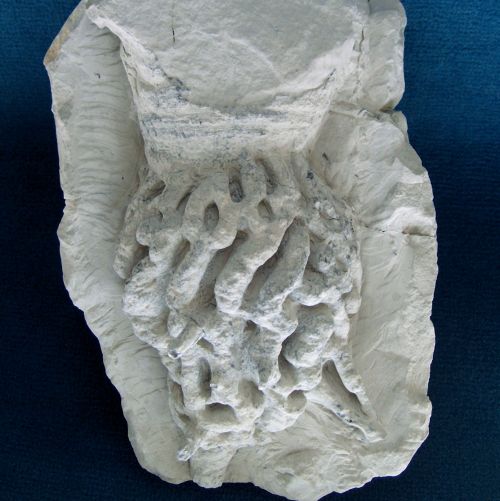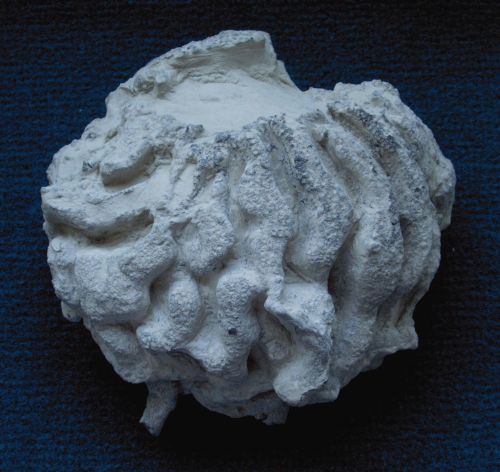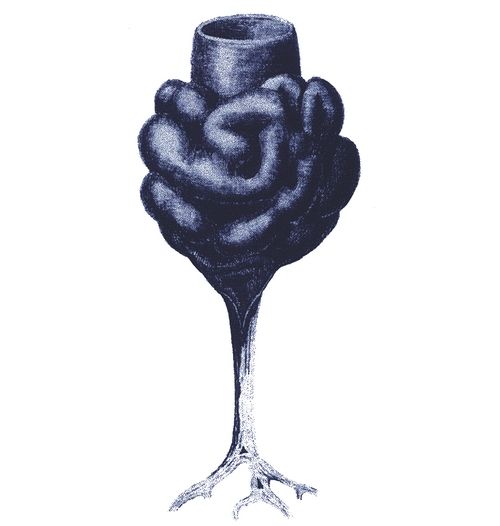
Oncolpia (Oncolpia) elegans
Smith 1848
To the author's knowledge, this is the first report of Oncolpia for Germany. The two specimens of Oncolpia elegans shown here were recovered from the Teutonia quarry in May, 2006.
The first specimen shows the typical thin walled chimney on top of the intensely folded central part of the sponge. A short piece of the stem is also preserved.
The chimney wall is 1 to 2 mm thick, about 60 mm high and was probably some 50 mm wide prior to deformation. It shows concentric wrinkles, probably growth stages, and an outwardly widening rim.
The middle section consists of more or less radially oriented folds, approximately 10 mm thick, and similarly sized interspaces. The folds are partly anastomosed and also have some tube-like appendices pointing in outward to downward directions. The radial folds show a slightly spiralling arrangement relative to the sponge axis.
The stalk is approximately finger-thick, and the transition into the folded middle part is rather sharp.

The second example of Oncolpia (Oncolpia) elegans, is a fragment representing the folded middle section. The chimney has either been lost or the individual was in an ontogenetic stage before chimney development.
The surfaces of both specimens have a rough appearance, due to irregularly disposed, one to two millimeter sized ostia on the fold walls, and due to a rather irregular skeletal structure.
The skeleton consists of fused lychnisks. However, the central lanterns of the lychnisks are always filled with silica, such that the nodes have a solid, globular shape.

Drawing of Oncolpia elegans. From Smith, 1848.